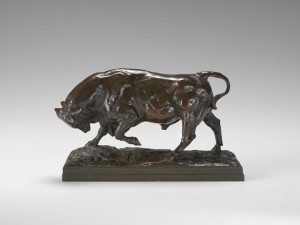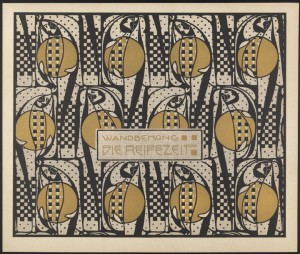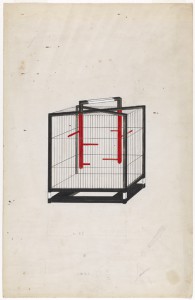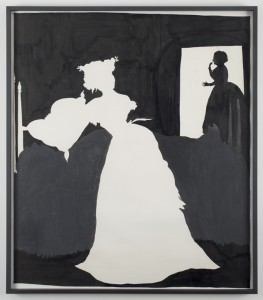
Charging Bull, ca. 1842, Antoine-Louis Barye, French, 1796–1875, bronze (atelier), 615⁄16 x 117⁄8 x 41⁄8 in. Gift of Mrs. Nelson L. St. Clair Jr.
Featuring more of the recently acquired pieces added to your permanent collection at the VMFA by our privately funded acquisition program, these pieces explore forms from small-scale bronze French sculpture to a black cut-paper silhouette depicting America’s racial and gender tensions.
For more than a decade, Mrs. Nelson St. Clair Jr. has been enriching VMFA’s European holdings through gifts of French animal sculptures by Antoine-Louis Barye and others. Barye’s small-scale bronzes of animal subjects completely revolutionized the field of French sculpture, and Charging Bull is an impressive example of the artist’s powerful realism. Cast under his careful supervision, it is enriched by a rare variegated patina known as “Autumn Leaves” (feuilles d’automne).
— Dr. Mitchell Merling, Paul Mellon Curator and Head of the Department of European Art

Plate from Flächenschmuck (Decorations for Flat Surfaces), 1901,
Koloman Moser (designer and illustrator) (Austrian, 1868–1918), lithographs. The Swenson Art Nouveau Fund Koloman Moser is one of the most distinguished artists of the Viennese Art Nouveau style.
This lithograph plate is one of two recently acquired prints that are part of volume III from a series of three design portfolios called Die Quelle (The Source). Moser’s contribution, which includes some of the artist’s best graphic designs, represent the entire scope of his work— from wrapping papers and endpapers of books to wallpapers, wall textiles, tapestries, rugs and floor coverings, upholstery fabrics, and printed silks.
— Barry L. Shifman, Sydney and Frances Lewis Family Curator of
Decorative Arts from 1890 to the Present

Design for a Birdcage, ca. 1922–23, Pierre Legrain (French, 1888–1929), Pencil, ink, and gouache on paper, 17 7⁄8 x 11 7⁄8 in. John and Maria Shugars Fund
In 1912, Pierre Legrain decorated fashion designer Jacques Doucet’s townhouse on the Avenue du Bois in Paris. Later, he also provided furnishings for Doucet’s residence on the Rue Saint-James in Neuilly. Legrain’s watercolor is a preliminary sketch for a birdcage that Doucet commissioned for his studio. The actual birdcage is part of VMFA’s collection, on view in the Lewis Decorative Arts galleries. It is a remarkable object for such a utilitarian purpose.
— Barry L. Shifman, Sydney and Frances Lewis Family Curator of
Decorative Arts from 1890 to the Present

Untitled, 1996, Kara Walker (American, born 1969), ink, graphite, and collaged paper on paper, 85¼ x 72¼ in. Purchased with funds given by Pam and Bill Royall Jr., Mary and Don Shockey Jr., Marion Boulton Stroud, and Lewis Endowment Funds
Walker is known for large-scale installations of black cut-paper silhouettes that explore America’s racial and gender tensions. She draws inspiration from Southern romance stories, historical fiction, slave narratives, and contemporary novels. She sets her scenes in the pre-Civil War South, while freely mixing fact, fiction, and fantasy. This particularly large ink-wash drawing has the bold simplicity of Walker’s cut-paper work. A young woman appears caught in the act of smothering a sleeping man in his four-poster bed. Though the precise nature of the depicted act and the race of the woman are uncertain, the artist says she imagined a mercy killing that is met equally with surprise and tacit approval, casting the protagonist (house slave? daughter? both?) as hero and villain at the same time.
— John B. Ravenal, Sydney and Frances Lewis Family Curator of Modern and Contemporary Art